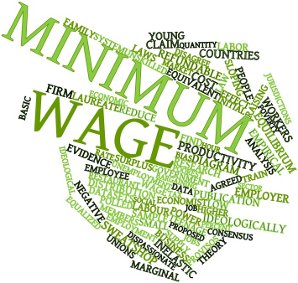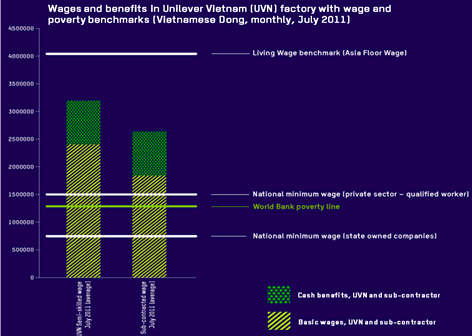 The wages discussion is far from over. Not ‘just’ when it comes to the slightly out-of-range bonuses some people in the finance industry, together with a number of high-level executives of other industries, earn. But rather globally, even in ‘developed’ Western markets. This applies to ‘fair wages’ for physically handicapped people e.g. the blind, and crosses over to living and minimum wage discussions in the countries such as the UK, the US, or Spain (white collar precariate). The fashion industry would have a lot to tell also in this context.
The wages discussion is far from over. Not ‘just’ when it comes to the slightly out-of-range bonuses some people in the finance industry, together with a number of high-level executives of other industries, earn. But rather globally, even in ‘developed’ Western markets. This applies to ‘fair wages’ for physically handicapped people e.g. the blind, and crosses over to living and minimum wage discussions in the countries such as the UK, the US, or Spain (white collar precariate). The fashion industry would have a lot to tell also in this context.
Hence, for this article I would like to focus on:
- the definitions of the different threshold wage types: minimum, living, and Asia Floor; as well as
- look at the Asia Floor Wage concept in more detail together with the Wage Ladder approach.
Both of these latter concepts can – and in fact were, if only in theory – applies to Western markets in order to be able and compare relative wage levels: i.e. a nation’s wage for survival, and e.g. its average wage.
Definitions: Minimum wage, living wage, Asia Floor Wage
Minimum Wage and Living Wage are terms also used in developed countries. They are defined as follows:
- Minimum Wage := the lowest wage permitted by law or by a special agreement.
- Living Wage := a wage which is high enough to maintain a normal standard of living.
Since 2007 app. another term as entered the discussion around, very specifically, wages in major Asian production countries: the Asian Floor Wage (AFW).
In order to understand the AFW concept better, the definition of the following term is needed, however:
- Wage Floor := floor below which wages are not allowed to fall.
Asia Floor Wage and the Wage Ladder
Asia Floor Wage – the animated story. (c) Clean Clothes CampaignIn essence, the Asian Floor Wage is akin to the living wage.
However, it is in as far different as – by design – is designed such that it would prevent countries competing at the expense of workers: the ‘basket’ of goods and services that could be bought from it is assessed across different nations – and in fact, the concept can in principle be expanded for analysis of developed markets also -. While the Minimum and Living Wage are typically set by each country according to differing (cultural, economic, legal, societal) standards, the AFL takes an objectivised stance of what is part of the ‘basket’.
The video on the right illustrates in a simple manner what the AFL is.

Under consideration of all of the above approaches to define ‘reasonable’ wages, the Fair Wear Foundation has developed a tool called the ‘Wage Ladder‘.
The FWF Wage Ladder (left: simplified example from an Oxfam project with Unilever) is a chart of ‘local estimates of a living wage by a wide range of stakeholders, as well as other wage benchmarks, such as the local legal minimum wage. It is a tool that visualises the gap between these wage levels, and can be used to chart wages in individual factories‘.
Conclusion
The interesting thing about the Asian Floor Wage is the fact that it, broadly, objectivises the discussion on what is, or not, a living wage when crossing national borders – to the extent that it can indeed be applied to Western markets.
The implication of such an approach is evident: It also allows to objectivise the discussion of whether, and indeed if so by how much, of a price increase in consumer goods is needed to pair fair wages to the workers producing them.
Give that much of the discussion in mature consumer markets is around whether consumers are, or not, willing to pay for fair manufacturing conditions in producing countries, and whether or not brands can afford to produce in specific markets, the importance of these tools cannot be underestimated. Because, in a sense, they bring the ‘science’ to the table of what otherwise is a rather emotional, and as a consequence not very often productive discussion.
—
Further information:
For an in depth introduction to the construction and implementation of the Asia Floor Wage, the following book is an excellent, if demanding, read:
- Fair Wages: Strengthening Corporate Social Responsibility,
By: Daniel Vaughan-Whitehead,
ISBN: 9781849801478.

